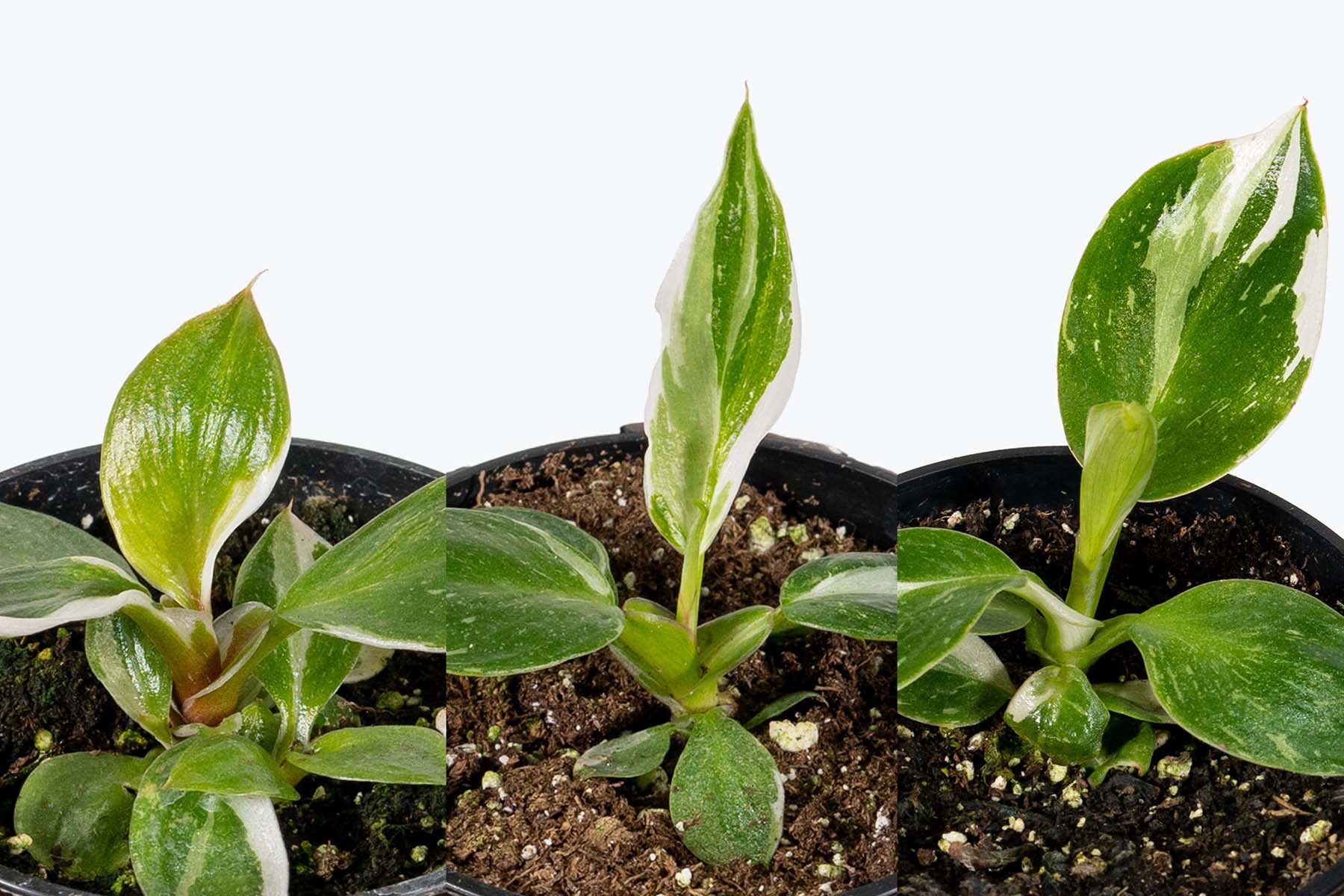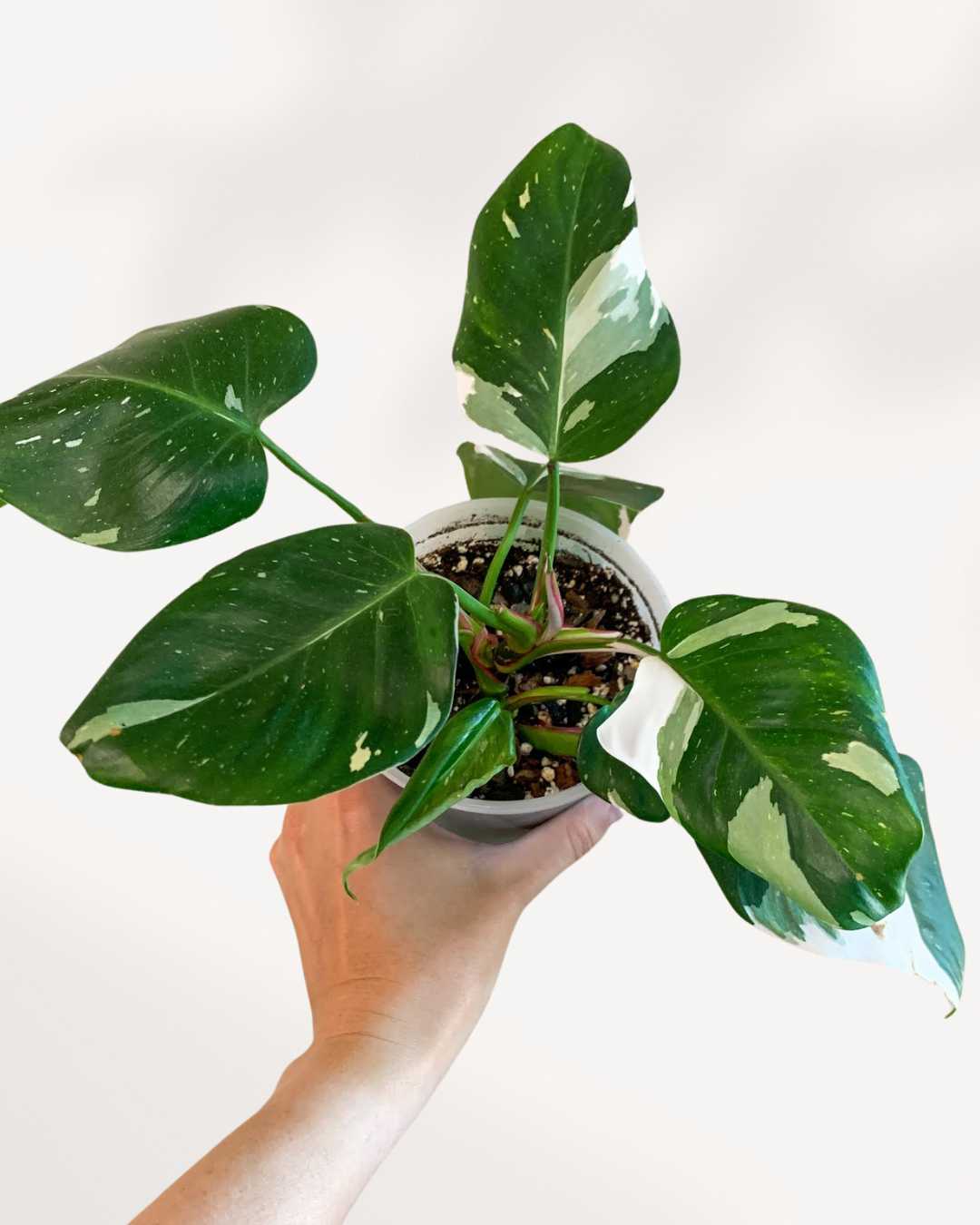.jpg)
Essential Care Tips to Keep Your Philodendron Thriving Indoors
The Philodendron White Princess, White Knight, and White Wizard are some of the most stunning and sought-after variegated plants in the indoor gardening world. Their unique color patterns and elegant growth habits make them a favorite among plant enthusiasts. However, these beauties require specific care to thrive. In this guide, we’ll explore everything you need to know to keep your White Princess, White Knight, and White Wizard healthy and happy.
Understanding the Differences Between These Philodendrons
Before diving into the care tips, it’s important to understand the differences between these three plants. Though they belong to the same family, each has distinct characteristics:
- Philodendron White Princess: This variety is known for its green stems with occasional pink edges and white variegation that splatters across the leaves. It’s slightly more compact compared to the others.
- Philodendron White Knight: With deep burgundy stems and rounded leaves, the White Knight is a striking plant that commands attention. Its variegation is more patchy compared to the White Princess.
- Philodendron White Wizard: The rarest of the three, the White Wizard has green stems and large, round leaves with sectoral variegation. It’s a fast grower when given the right conditions.
Lighting Requirements
All three of these Philodendrons thrive in bright, indirect light. The white variegation on the leaves means they have less chlorophyll, which can make them more sensitive to light conditions:
- Bright, Indirect Light: Place your plant near a north or east-facing window where it will receive plenty of light without direct sun exposure. Direct sunlight can scorch the leaves, especially the white parts.
- Avoid Low Light: In low light conditions, the variegation may fade, and the plant will produce more green leaves to compensate. Consider supplementing with a grow light during the darker winter months.
Watering Your Philodendron
Watering is crucial to the health of your Philodendron, but it’s essential to strike the right balance:
- Watering Schedule: Water your plant when the top inch of soil feels dry to the touch. These plants prefer a bit of moisture but do not like to sit in water, as this can lead to root rot.
- Water Quality: Use room-temperature, filtered water if possible. Tap water that is too cold or contains high levels of chlorine can damage the plant.
- Drainage: Ensure your pot has drainage holes and that the soil drains well. A well-draining mix with a combination of peat, perlite, and orchid bark works well.

Humidity and Temperature
These tropical plants love humidity and warmth, which mimic their natural environment:
- Humidity: Aim for humidity levels of 60% to 80%. If your home is dry, consider using a humidifier or placing your plant on a humidity tray. Misting can also help, but be cautious as excessive moisture on the leaves can lead to fungal issues.
- Temperature: Keep your Philodendron in a warm environment, ideally between 65°F to 80°F (18°C to 27°C). Avoid placing it near cold drafts or heaters.
Soil and Fertilization
Choosing the right soil and feeding your plant appropriately will ensure it grows strong and vibrant:
- Soil Mix: Use a well-draining potting mix that retains some moisture. A mix of peat, perlite, and orchid bark creates the perfect environment for these Philodendrons.
- Fertilization: Feed your plant with a balanced liquid fertilizer every 4-6 weeks during the growing season (spring and summer). Reduce feeding in the fall and winter when growth slows down.

Pruning and Maintenance
Regular maintenance will keep your plant looking its best:
- Pruning: Trim any yellowing or damaged leaves to encourage new growth and keep the plant healthy. You can also prune to control the shape and size of the plant.
- Cleaning: Dust can accumulate on the leaves, hindering photosynthesis. Gently wipe the leaves with a damp cloth every few weeks to keep them clean and shiny.
Repotting Your Philodendron
Philodendrons are slow to moderate growers, but they will eventually outgrow their pots:
- When to Repot: Repot your plant every 1-2 years or when you notice roots growing out of the drainage holes.
- How to Repot: Choose a pot that is 1-2 inches larger in diameter than the current one. Gently remove the plant from its old pot, place it in the new one with fresh soil, and water thoroughly.

Common Problems and Solutions
Even with the best care, your Philodendron may encounter some issues. Here’s how to troubleshoot:
- Yellowing Leaves: This can be a sign of overwatering. Allow the soil to dry out more between waterings.
- Browning Leaf Tips: Low humidity or over-fertilization can cause this. Increase humidity and reduce fertilization frequency.
- Pests: Watch out for spider mites and aphids. Treat infestations with insecticidal soap or neem oil.
Conclusion
The Philodendron White Princess, White Knight, and White Wizard are truly stunning plants that can elevate any indoor space. With the right care, they will thrive and continue to produce their beautiful variegated leaves, adding a touch of nature's artistry to your home. Remember, the key to their success is consistency in care, so keep an eye on their needs, and they will reward you with their breathtaking beauty.






